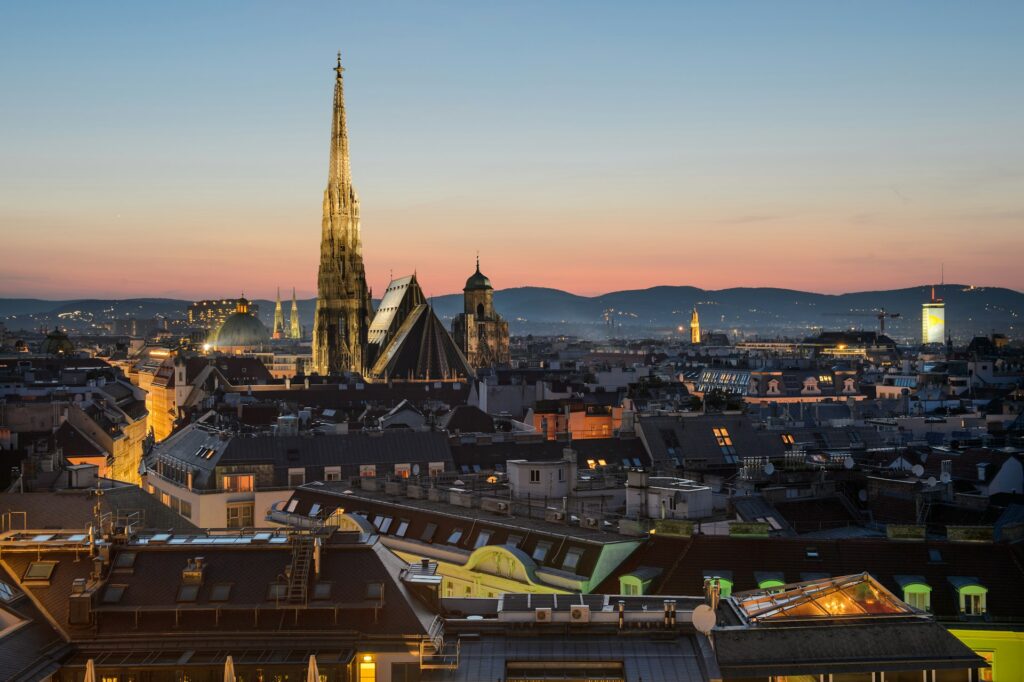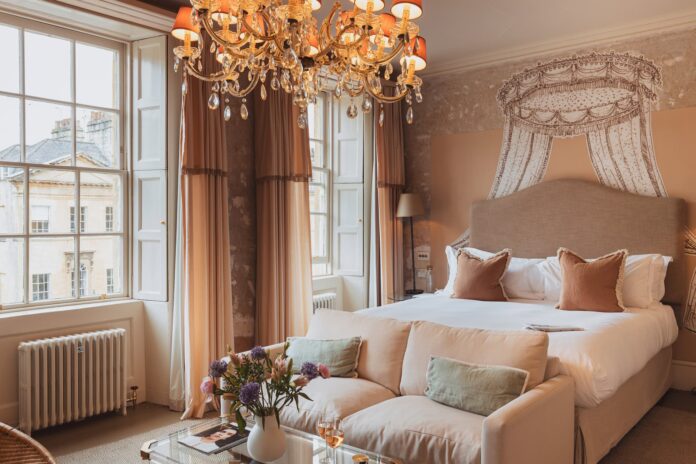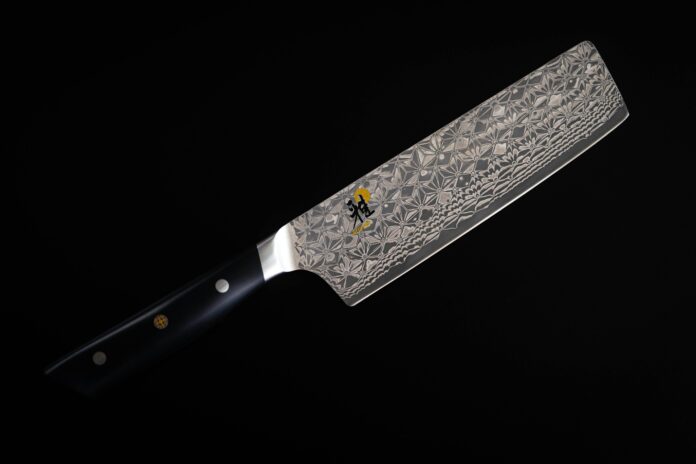Yes, Vienna has the Spanish Riding School. Yes, it has Schönbrunn Palace. And yes, you can queue for an hour at Hotel Sacher for that famous chocolate cake.
But Vienna’s real charm lies beyond these tourist hotspots, in the neighbourhoods where Beethoven was afraid to set foot and Mozart certainly never lived (we say neither of those with real conviction).
While tour groups shuffle through the Hofburg, we’ll show you where actual Viennese people spend their time, eat their meals, and find their joy in Austria’s captivating capital.
Getting There & Around
Direct flights from London’s Heathrow and Gatwick take about two hours to Vienna International Airport. Skip the expensive taxis (€40+) and take the CAT (City Airport Train) for €11, which reaches Wien Mitte station in just 16 minutes. From there, Vienna’s excellent U-Bahn system can get you anywhere.
For transport around the city, invest in a 48-hour Vienna transport pass (€15.30). While the historic centre is walkable, you’ll want to explore further afield. Vienna’s public transport is famously efficient – even at 3am, the night buses will get you home.
For those seeking more flexibility and comfort, particularly for exploring Vienna’s outer districts or venturing into the Vienna Woods, consider hiring a bus with a driver. Several reputable companies offer private bus rental services with professional drivers who know the city inside out – our pick is 8rental, who we’ve had good experiences with previously.
This option is particularly valuable for groups or those wanting to create their own itinerary, especially for reaching attractions like the Kahlenberg viewpoint or the wine villages of the Wachau Valley. Prices typically start from €300 per day for a minibus with driver, and most companies can arrange bespoke tours with pick-up and drop-off at your accommodation. Book through your hotel or the tourist office for the best rates.

Day 1: Markets & Modern Vienna
Morning: Vienna’s Famous Coffee Culture Without The Queues
While tourists pack into Café Central and Demel, start your day at Café Korb on Brandstätte. This 1960s time capsule serves proper Viennese coffee without the pomp. Sigmund Freud was a regular, but today it’s where artists and writers gather over Melange (Vienna’s answer to a cappuccino) and perfectly scrambled eggs. The basement jazz club hints at its edgier side.
For something even more local, walk to Café Telegraph in the 9th district. Their house-made pastries rival any café in the city, but here you’ll be surrounded by Viennese starting their day with coffee and the morning papers.
Midday: The Other Market
Forget the Naschmarkt – it’s now more tourist trap than food market. Instead, head to Karmelitermarkt in the 2nd district (Leopoldstadt). This formerly Jewish quarter has become Vienna’s most exciting food neighbourhood. On Saturdays, local farmers bring their produce, and young chefs run stalls selling everything from Austrian natural wines to contemporary takes on traditional cuisine.
Look for Kaas am Markt’s mountain cheeses, and don’t miss the handmade Buchteln (sweet yeast buns) at Gebäckstube. For lunch, grab a table at Karmelitermarkt Stall 21’s, where traditional Viennese dishes meet modern cooking. Their seasonal lunch menu changes daily, but the Erdäpfelgulasch (potato goulash) is a regular fixture.
Read: 19 must-try dishes in Austria and where to try them

Afternoon: Art Beyond The Museums
While the masses queue for the Kunsthistorisches Museum, take the U4 to Hietzing and discover the Otto Wagner Hospital. This stunning Art Nouveau complex is still a working hospital, but its copper-domed church is open to visitors. The grounds offer one of Vienna’s most photogenic spots, yet you’ll rarely see another tourist.
Next, head to the 7th district’s Spittelberg quarter, a maze of beautifully preserved Biedermeier streets. Pop into the galleries along Burggasse – Improper Walls showcases emerging Austrian artists, while Frühsorge Contemporary regularly features challenging new work.
Evening: Dining Locally
Book ahead for Gasthaus Rebhuhn, hidden in a residential corner of the 8th district. This modernised Beisl (traditional tavern) serves updated Viennese classics without the tourist markup. Try the seasonal mushroom gulasch or their contemporary take on Tafelspitz (boiled beef). The wine list focuses on small Austrian producers, particularly from the nearby Wachau Valley.
For after-dinner drinks, avoid the touristy bars of the 1st district and head to If Dogs Run Free in the 6th. This cocktail bar, popular with Vienna’s creative crowd, serves innovative drinks in a space that feels more Berlin than classical Vienna.

Day 2: Green Spaces & Hidden Places
Morning: Breakfast Club
Begin your day at Café der Provinz in the 8th district. This charming French-Austrian hybrid serves an excellent organic breakfast in a cozy setting. Their house-made granola and eggs Benedict with local ham have earned them a devoted following among neighborhood residents.
Mid-Morning: The Other Palace
Skip Schönbrunn and head to Neugebäude Palace in the 11th district. This Renaissance castle, commissioned by Emperor Maximilian II, is criminally overlooked. Though the actual building is no longer open to visitors, the sprawling grounds offer peaceful walking trails and a real sense of place.
Lunch: Market Fresh
Return to the city for lunch at Café Sperl in the 6th district. This historic café-restaurant, dating back to 1880, serves excellent traditional Austrian cuisine in a stunning setting. While it’s beautiful enough to be in guidebooks, it remains a genuine local institution where Viennese regularly enjoy their lunch. Their Gulasch and house-made pastries are particularly noteworthy.

Afternoon: Urban Village
Take the D tram to Nussdorf, where Vienna dissolves into vineyards. This former wine village, now part of the 19th district, offers hiking trails through working vineyards. Stop at Heuriger Kierlinger, a traditional wine tavern where local winemakers serve their latest vintages alongside simple, home-cooked food. The view over Vienna from their garden is spectacular.
If it’s raining, explore the Werkbundsiedlung instead. This 1932 housing estate in the 13th district features 70 modernist houses designed by different architects, including Adolf Loos. It’s a fascinating contrast to central Vienna’s imperial pomp.
Evening: Modern Vienna
End your trip at Mraz & Sohn in the 20th district. This two-Michelin-starred restaurant serves some of Vienna’s most innovative food in an unpretentious setting far from the tourist trail. The ‘neighbourhood’ tasting menu offers a contemporary take on Viennese cuisine that’s worth the splurge.
For a more modest but equally authentic final meal, try Gasthaus Wolf in the 4th district. This modernised Beisl serves traditional Viennese dishes with thoughtful updates. Their wine list focuses on natural wines from small Austrian producers.

A Few Vienna Tips
- The Vienna Pass is rarely worth it unless you’re planning to visit every major museum.
- Many restaurants close on Sundays – book Saturday dinner well in advance.
- Avoid restaurants advertising ‘traditional Viennese cuisine’ in English – they’re likely tourist traps.
- The best views of Vienna aren’t from the tourist spots but from the Bahnorama tower at the main station.
- Most museums are free on the first Sunday of each month.
- For custom tours away from tourist hotspots, several companies offer private bus hire with knowledgeable local drivers who can create bespoke itineraries focusing on hidden gems and authentic experiences.
The Bottom Line
Vienna’s tourist trails are well-worn for a reason – the city’s imperial heritage is genuinely impressive. But step away from the crowds, and you’ll find a vibrant, modern city where tradition and innovation coexist in fascinating ways.
From modernist housing estates to hidden wine taverns, contemporary art galleries to neighbourhood markets, this ‘other Vienna’ offers rewards that more than match its famous attractions.
Next up, we’re heading to Krakow, Poland. Care to join us?





